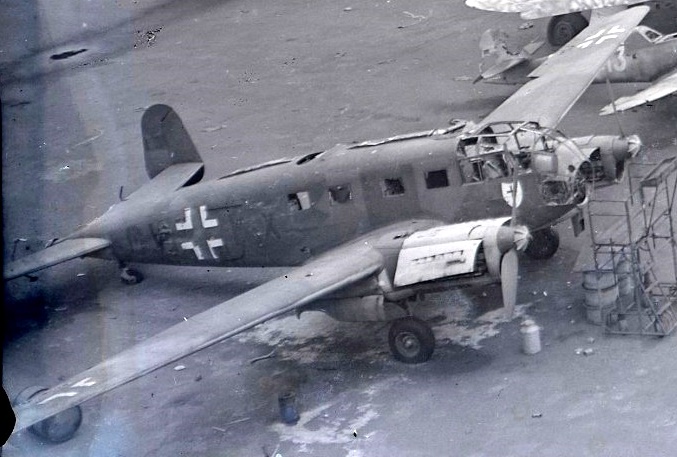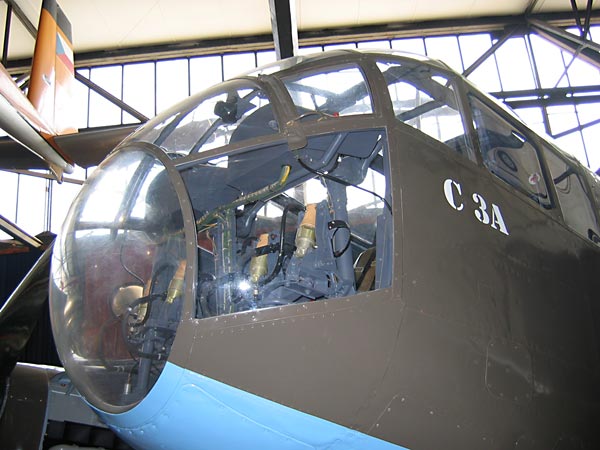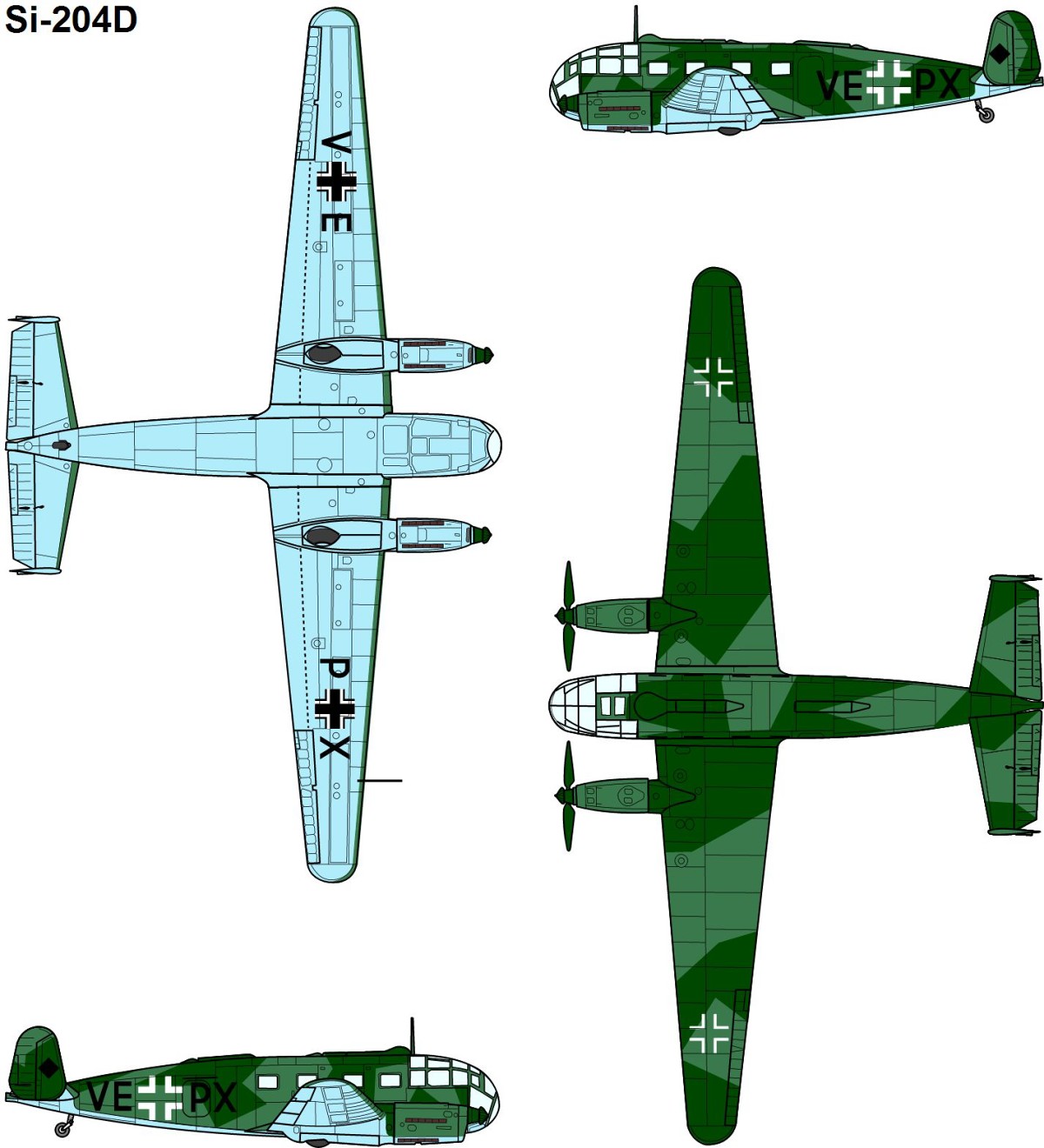Hey Guys,
i haven't thrown one out there for a while, so here's an interesting little "forgotten" bird that was built in significant numbers ( 1,216 ) and by all accounts seems to have performed fairly well - enough to have been kept in production and service post WWII.
The Siebel 204


From Wikepedia (with my usual alterations)
The Siebel Si 204 was a small twin-engined transport and trainer aircraft developed during World War II. It was based on the Fh 104. Originally designed in response to a RLM development order for a small civil transport plane in 1938, it was eventually produced for the Luftwaffe.
Development
The Si 204 was planned as a small passenger plane with 2 crew and 8 passengers for German airline Deutsche Luft Hansa. The development of this all-metal-plane was initiated in 1938. The contractor was, as usual, the RLM, but the development was conducted in close collaboration between Luft Hansa and Siebel in Halle. After the beginning of the war the plane was re-designed as a trainer aircraft with a full "stepless" glass cockpit, with no separate flat windscreen for the pilot (much as almost all German bomber aircraft of the time were being designed with), which seemed to be better for blind flying in the Si 204's case.
The first two prototypes only were delivered as passenger planes with the old cockpit. The maiden flight of the first prototype was before September 1940, possibly on 25 May 1940, that of the second prototype before February 1941. The third prototype was re-designed as a trainer aircraft for blind flying. As a result of this, the maiden flight was not earlier than the end of 1941 or the beginning of 1942.
At that time Siebel produced the Junkers Ju 88 under licence, and therefore only 15 prototypes were able to be built in Halle. As a result, SNCAN in France produced the passenger plane A-1 and the pre-series A-0 between April 1942 and November 1943. ?KD/BMM in the Czech Protectorate delivered the first blind flying trainer D-0 in January 1943 followed by the production of a further 44 D-0 pre-series planes. The D-1 series was begun in March 1943 by the Aero company, also located in the Czech Protectorate, and by BMM in June or July 1943. In August 1943, SNCAN also delivered the first D-1.
The production of the D-3 was started in October 1944 by the Aero company. The D-3 had wooden wings and a tail plane made of wood and metal. In France, production of the D-1 was ended in August 1944 as a result of the Liberation. All in all 168 Si 204 were built by SNCAN. BMM produced the plane until October 1944 and then changed to the production of spare parts for the Si 204. The Aero company was scheduled to cease production of the D-1 in March 1945 after building 486 planes and then switch to D-3 only. The aircraft, however, was only built until January 1945 with 541 completed. Therefore the total production was 1,216 including the prototypes.



More detailed blueprints here :
http://blueprints.over-blog.es/download-1691761-Siebel-SI-204-D--LOW_jpg.htmlProduction figures of the Si 204 until 31 January 1945:
Version Siebel SNCAN BMM/?KD Aero SUM
Prototypes 15 15 30
A-0 30 30 60
A-1 85 85 170
D-0 45 45 90
D-1 53 447 477 977
D-3 64 64 128
SUM 15 168 492 541 1.216
Sources: Files from Federal Archive/Military Archive Freiburg and from Lufthansa-Archive, Cologne
Some Skins



After the war, a production of Si 204 continued in Czechoslovakia and France. In Czechoslovakia Aero Vodochody produced 179 Si 204D, developed into military trainer variants Aero C-3A and C-3B (the later for bombardier training), passenger variant C-103 and military transport variant Aero D-44 until 1949. In France SNCAC, commonly known as Aérocentre, produced 240 transport NC-701 Martinets and a number (110?) of passenger NC-702 Martinets. The NC-701 was distinguished by three-blade propellers and was powered by 440 kW (590 hp) Renault 125-00 engines. The NC-702 had a modified nose.
Operational history
Scrapped Siebel Si 204 at Wunstorf, Germany, 1945
The use of the Si 204 D was mainly in B- and C-Schools (advanced schools) and by FÜG 1 (delivery wing of the Luftwaffe), probably as a taxi plane for crews who had delivered other planes to fighting units. The utilization in blind flying schools was sporadic; for radio schools there is no evidence of use. The Si 204 A flew mainly with communications squadrons and flying services for senior officers, but also with schools.

In July 1944 five Si 204 were destined to be converted to night combat planes, but no further planes were allotted. They were probably intended for the pre-series Si 204 E-0. There is, however, no evidence that these planes were ever used in combat situations.

Luft Hansa received at least four Si 204: The first prototype, D-AEFR, was evaluated from March to May 1941 by Luft Hansa Prague. From spring 1942 to spring 1943 the second prototype, D-ASGU, was used on regular routes as a freight carrier.
An Si-204 was likely the last German aircraft shot down on the Western Front. At 8 PM on the evening of May 8, 1945, 2nd Lt. K.L. Smith of the 9th Air Force's 474th Fighter Group, flying a P-38 Lightning, downed a Siebel three miles southeast of Rodach, Bavaria.
At the end of the war one Si 204 D remained in Berlin-Tempelhof (named “Rhein”). One flew to Enns in Austria, where it was captured by the Allies. Captured Si 204s flew in a variety of roles in the Soviet Union, including with Aeroflot and TsAGI, but were all quickly phased out of service as local aircraft manufacturing was re-established.
The Office

The Horses

The Colours


Thrown out there for some comments.
Kopfdorfer
Ranwers don't let this happen to another plane!

 Author
Topic: Siebel 204 Trainer , Transport and Liaison Aircraft (Read 9700 times)
Author
Topic: Siebel 204 Trainer , Transport and Liaison Aircraft (Read 9700 times)


